If you have a pond in your backyard, chances are you are quite the nature fan, and therefore, you would be interested in making that pond as beautiful and functional as possible and one of the best ways is to add some beautiful plants in and around your pond.
Here is a guide to ensure you get the most out of and make the most of your backyard pond.
We have listed 13 of the most popular pond plants as well as what functional purpose they serve or how they may benefit your plant and animal life there.
Creeping Jenny
This shiny evergreen is great because it is a perennial, meaning it will grow back every year, after the winter months. It does best in USDA Hardiness zones one thought ten (AKA minimum temperature zones of -40 Fahrenheit to 40 F).
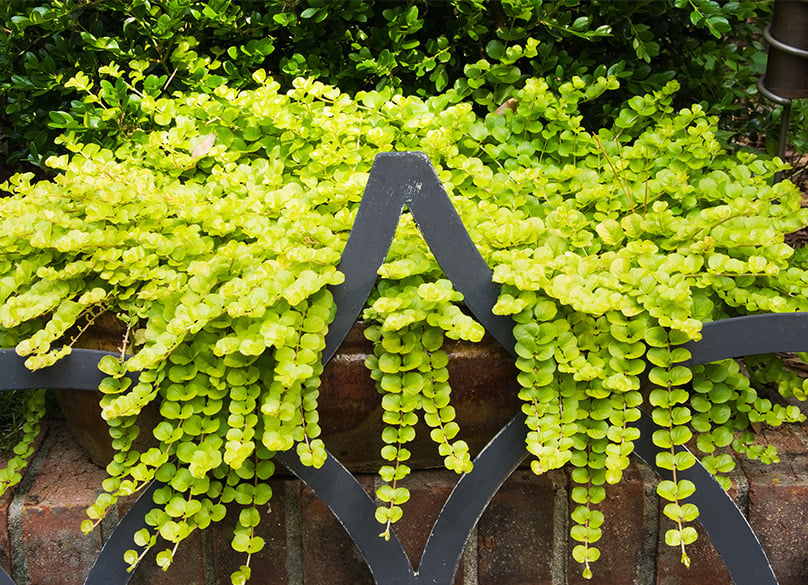
As the name implies, it will creep across ground (dirt, rocks, etc), or when placed in a pot (hanging or otherwise) it will drape over the sides in a waterfall type fashion. It is pretty to look at, which works well if you have any unsightly parts you would like covered. Other names it is known by: Lysimachia nummularia, Moneywort.
Horsetail Rush
This striking structure reaches up to two feet in height, eight in the dwarf version, and can withstand as low as -25 degrees Fahrenheit temperatures. Like the name somewhat implies, these are long somewhat thin stalk-like structures. They have rings of black, green, and beige.
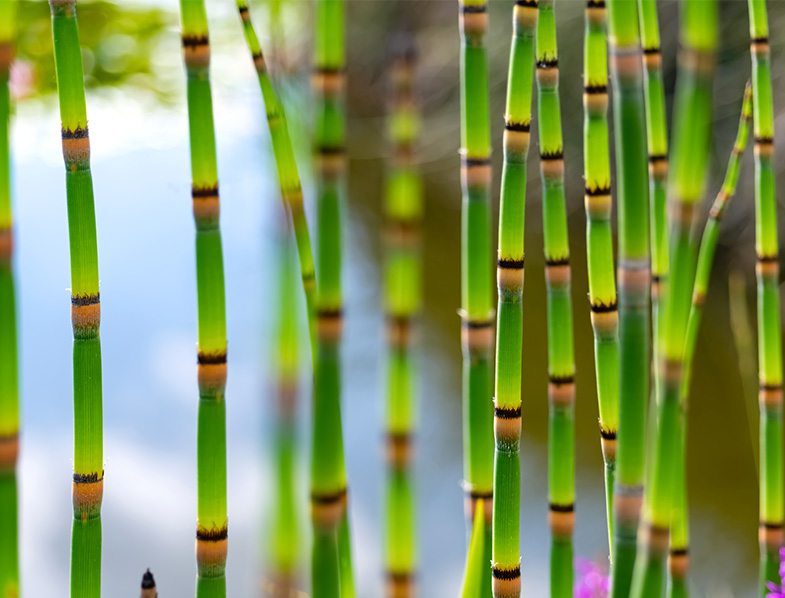
They will definitely give some stark aesthetic contrast in your pond and some interesting visual dynamics. Not to mention the durability. One unique thing about this plant is that it produces spores instead of seeds. It is the only one in the aquatic plant genre that does this. Be careful, if you do not want them to spread and grow elsewhere, it will behove you to cut them down in the fall to reduce spore dispersal. Take a look at the interesting colors, when you can. Other names: puzzlegrass.
Mosaic Plant
If you live in a warmer area, this plant is for you. This more tropical plant can only withstand down to 50 degrees Fahrenheit temperature. If it is a good fit for your area, however… it is a wonderful addition.
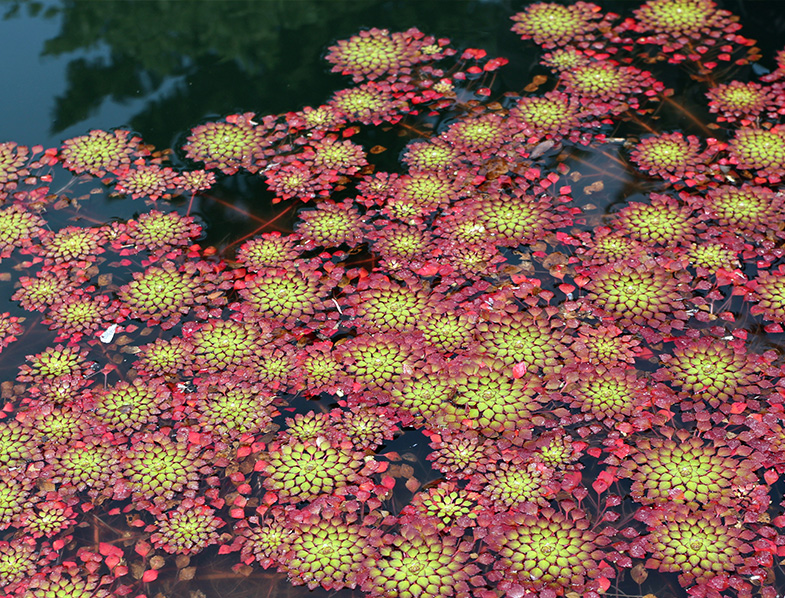
As this name also implies, it is a series of small, little leaves (mostly green with some red bits throughout), that are arranged in such a way as to create beautiful little rosette type patterns.
This gem gets planted about six inches below the water’s surface, and then floats beautiful rosettes atop. Be careful of your water’s pH level, as it prefers more acidic levels. It will die if the pH reaches above eight. It also blooms yellow flowers in the summer months.
Due to the temperature sensitivity of this one, it may be considered more of an annual (only living through the warm seasons and not returning the next year), unless you live in warmer regions.
Water Lettuce
These adorable floaters look just like lettuce heads, only a bit less full and more open-faced. They are a lighter, lime green in color. One unique thing about this plant is that they float on the surface of the water while the roots simply hang below, so, there is no contact with dirt.
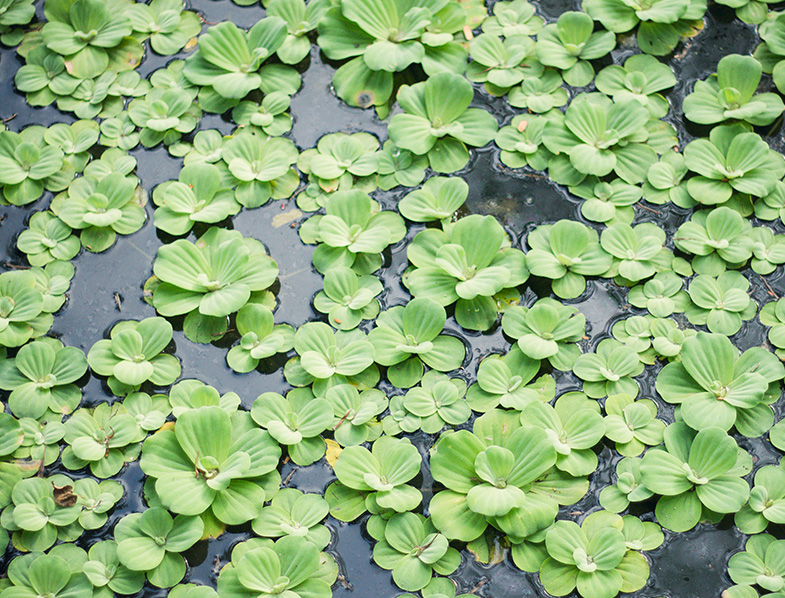
Babies are made in summer months by them… which can be easily transplanted. These are also a more warm climate plant. They can survive as low as thirty degrees Fahrenheit temperature. So, depending on your area, this may be more of an annual type plant for you. Other name: Pistia, water cabbage, shellflower, and Nile cabbage.
Cardinal Flower
Like the name implies on this one, this bright, rich red color of this plant pops, just like the red cardinal bird does against the green back-drop of nature. The stem and flowers on this plant both are rich red.

It is planted in shallow edges of water to grow up to three feet in height. It can withstand temperatures as low as -15 degrees Farenheit. This plant is native to the Americas (specifically southern Canada to northern Columbia area). It is a perennial, and with USDA hardiness zones as they are with this one, it will survive winters in most areas.
Water Lily
Black Princess, Pink Grapefruit, ad Gloriosa are just a few specific variety recommendations that have been highly rated by users, though there are more. These beautiful water-toppers are in bloom through the whole summer long.
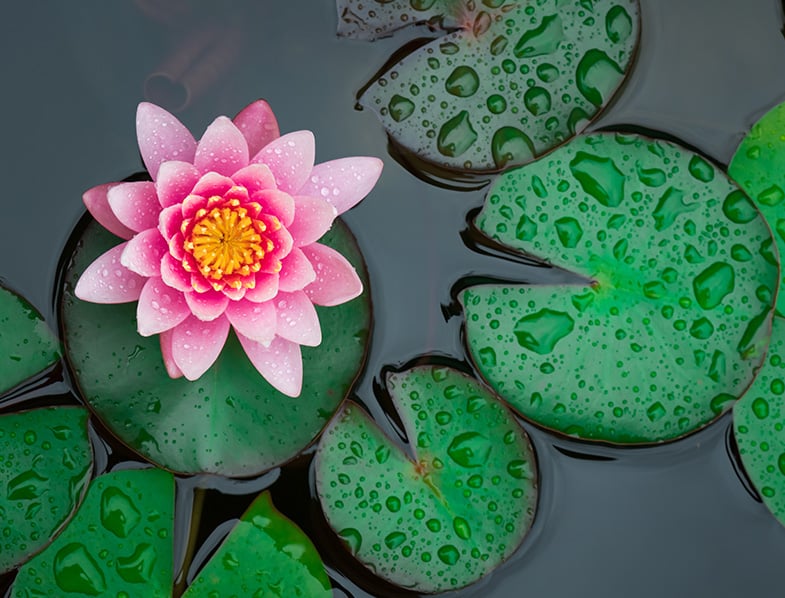
Most people are familiar with this flower, but, in case you’re not, they are round in shape, have many petals, are open face, and can be in a wide variety of colors. They also have few large, green leaves that float flat atop the water’s surface, while the flowers protrude up about six inches above the water’s surface. Other names: Nymphaeaceae.
Blue Iris
This appears to be strong among the favorites of pond plants for people who’ve had them. This plant is especially elegant, maybe because of the detail and delicateness of its flowers. They look a lot like orchids.
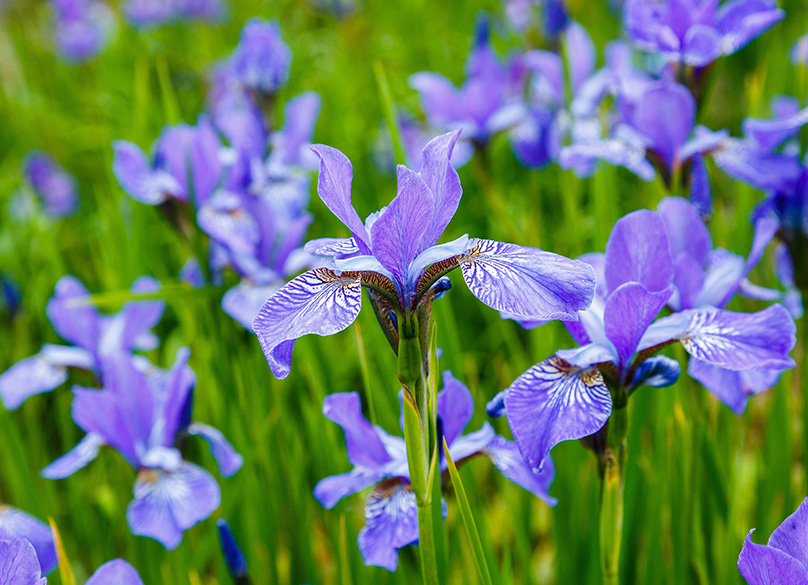
They are a light blue to purple in color, with some yellow and white. The leaves are green and long. It grows tall, about four feet heigh. This plant is one of the first bloomers in spring within the aquatic group! Other names: Blue Flag Iris.
Green Taro
This interesting edible plant has been utilized by cultures of the asian geographic areas for centuries. You may have come across taro in your oriental cuisine. It is very common in asian cold drinks (smoothies and liquid varieties).
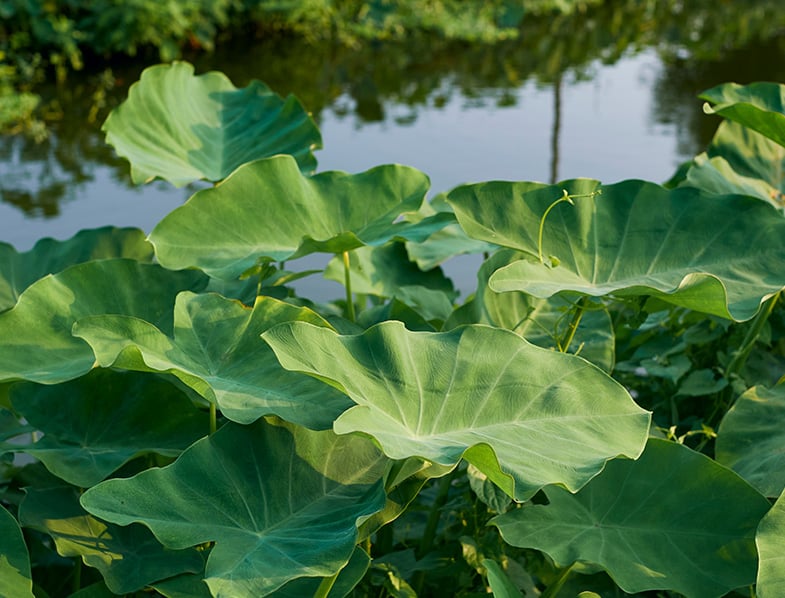
The drink versions of it tend to be a light purple/ lavender color. It tastes like marshmallow. The root does need to be cooked before used for human edible consumption. The plant has large green elephant ear like leaves, which can create a fun, stark contrast to smaller foliage around it.
Water Lotus
A few popular specific types that have been loved by users include Maggie Bell Slocum, Empress, and the Giant Sunburst. This flowering aquatic flora is widely used in Asian and Indian stories and folklore, as these areas are its native regions.
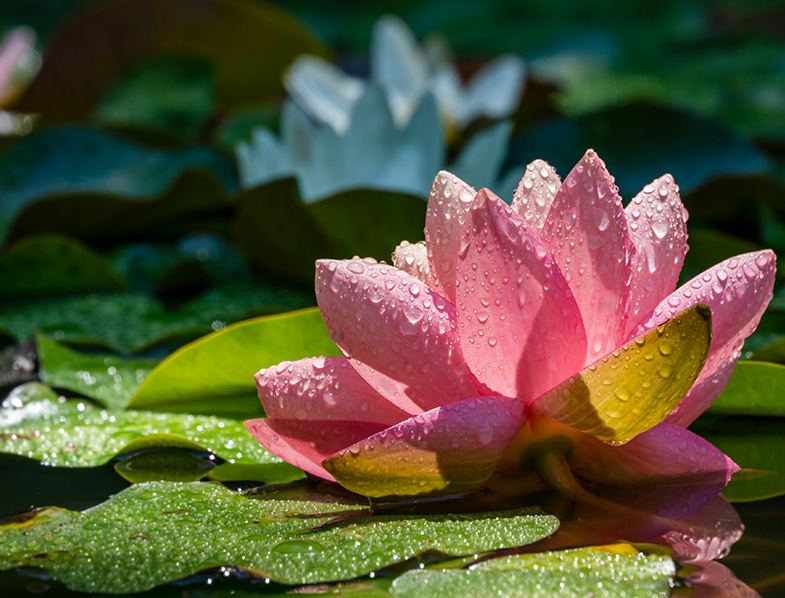
It has been cherished in these areas. This plant looks very similar to the water lily. The roots, leaves, and seeds of the American Lotus are actually edible. Other names include: Nelumbo, sacred lotus, Indian Lotus, bean of India.
Orange King Humbert Canna
This flora, as the name implies, is a vibrant orange color, however, it can also be bright red. Either way, it will pop amongst a green and blue backdrop. The flowers can look a bit like a bird of paradise flower, or an orchid. It is definitely more of a tropical looking plant, to add to your pond.
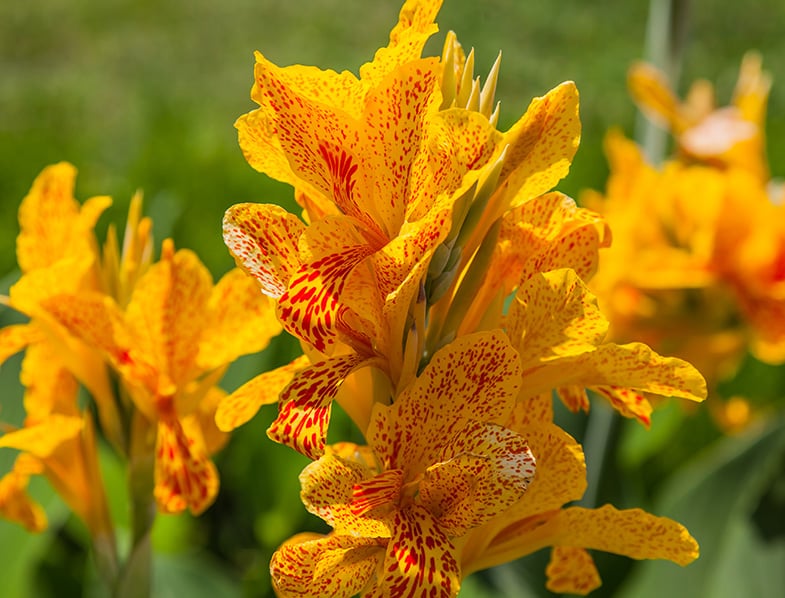
This plant is considered a perennial, blooming back every year; however, USDA hardy only to temperatures low as 15 degrees Fahrenheit. It is a bulb that likes sand, clay, loam, and chalky soil types. It tends to reach heights of up to five or six feet! It has large dark green leaves. Other names: Canna flaccida, orange water canna.
Water Hibiscus
This water-loving flora is native to Southeast United States. It is technically a multi-stemmed shrub. It grows up to five feet in height. It will die back in the winter months, but… no worry. It comes back upon spring season.
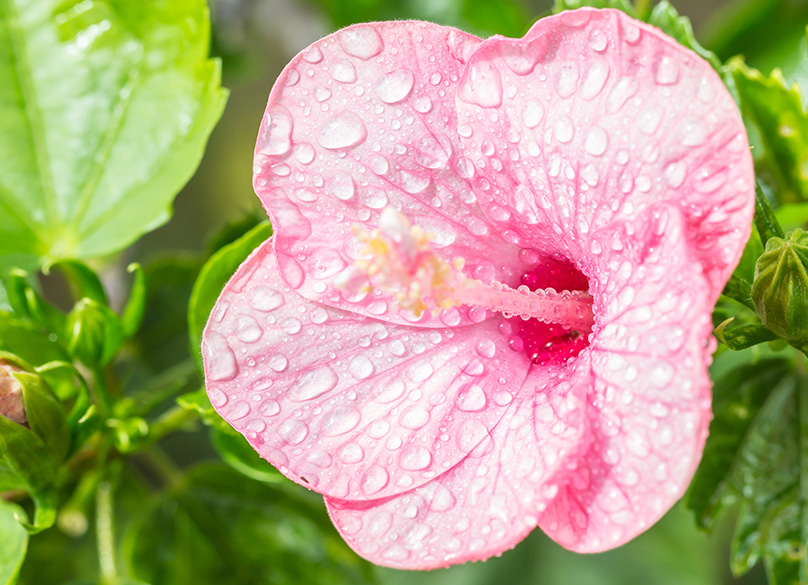
The large flowers on this flora range from white to red (including pink in the middle there). So, you have some choices on color. The colors are vibrant on this plant, indeed. One awesome aspect of this plant is that it naturally improves water filtration. Other names: Hibiscus coccineus, swamp hibiscus.
Dwarf Giant/ King Tut Papyrus Plant
This popular pond plant has mop-like poof heads. It reaches heights up to three feet, and widths of one foot. This plant has a lot of history to it. In ancient Egypt, indigenous people would create paper from this grass-like plant.

This is more than likely where the stationary company got its name, Papyrus (with the hummingbird logo). They do seem to have done very well for themselves. Egyptians would split the cylindrical reeds and weave them into paper for writing and notes.
The plant in its natural state is quite unique looking, and surely a wonderfully splendid addition to any backyard pond.
Being a native to warmer climates, this plant holds up to temperatures only as low as about 25 degrees. It is still popular, though.
Pickerel Rush
A member of the pontederiaceae (water-hyacinth) family, this cute blue-purple-lavender colored flowering flora decorates a pond quite nicely, indeed. Its leaves are bright green and long. The flower is in the shape of a cattail reed plant.
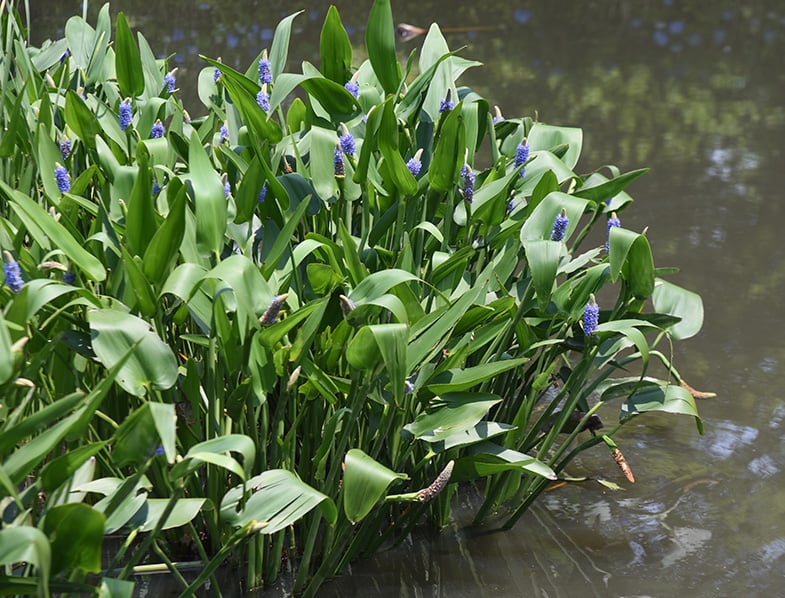
This plant also will naturally improve your pond’s water filtration. What a bonus to the good looks it will bring with it. It survives winters as low as -25 degrees Fahrenheit. This plant has been called tenacious, alluding to its ability to survive and grow in many conditions. This plant is sure to be enjoyed in nearly any US pond for years to come. Other names: Pontederia cordata, pickerelweed.
